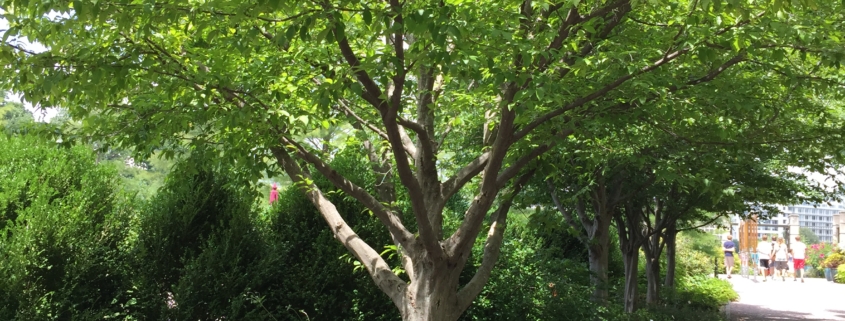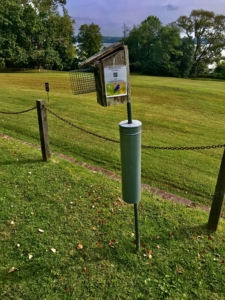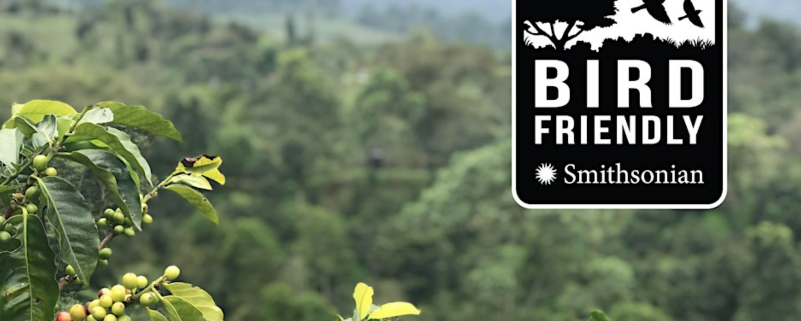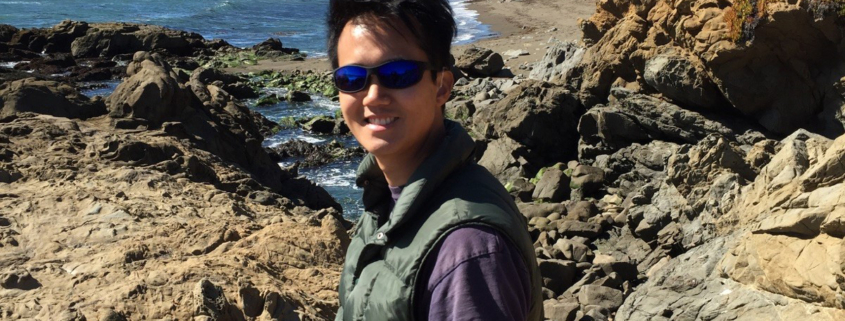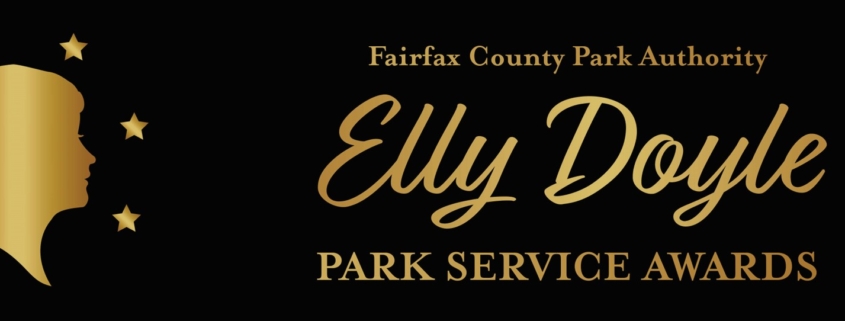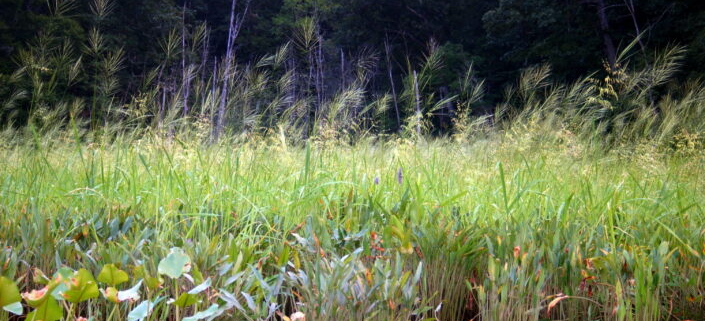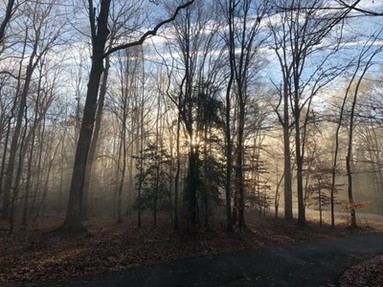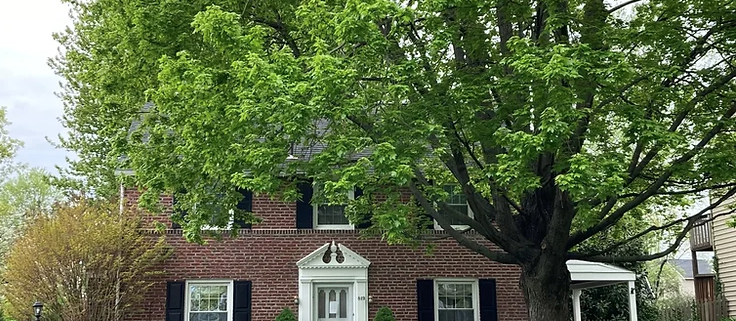Help Trees Thrive: Tear Up Some Turf
By Elaine Kolish, Fairfax County Tree Commission, photo: Plant NOVA Trees
It’s fairly common in residential neighborhoods to see trees surrounded by grass or by small mulch beds, often heaped high like a volcano. But did you know that your trees would be healthier and grow faster if you replaced that turf and mulch volcanos with a 2-4” deep ring of mulch that extends out to the tree’s drip line or even beyond? Let’s look at why this is.
Tree roots are not as deep underground as you might think. Instead they are generally fairly shallow, in the upper six inches of the soil, which is where turf grass roots grow. This means trees and turf are competing for the same water and nutrients in the soil. The grass generally wins. And of course, as trees become more established, the shade they cast doesn’t do the turf any favor. Turf grass does best with lots of sunlight, and dense shade will significantly affect grass growth and quality. Another factor to consider is that exposed tree roots in your lawn can be a trip hazard. In addition, when you mow over the grass-surrounded roots, you could be damaging them and detrimentally compacting the soil.
If you wonder how much difference turf under trees can make, one study reported that trees in turf grow at half the rate of trees that are not dealing with that competition. So if you want vigorous tree growth, no turf or less turf under them is best.
Another wonderful benefit from eliminating or reducing turf is the improvement in the survival rate of the caterpillars that turn into butterflies and moths that in turn bring beauty into our lives and environmental benefits. According to Doug Tallamy, a famous professor of entomology and wildlife ecology, a hard-packed lawn underneath a tree does not provide adequate pupation sites for caterpillars that may have been feeding on your native tree, such as an oak. The caterpillar may find no leaf litter (because the lawn has been cleaned up) in which to spin a cocoon, or if it is a species that burrows into the soil, it won’t find any loose soil if there is only turf under the tree. And we need these insects, not just for their beauty, but for their role as pollinators and as food for other wildlife. As E.O. Wilson, the eminent ecologist, famously said, insects are ”the little things that run the world.”
So consider eliminating the turf under your trees or combining various smaller mulched areas into a bigger area. Your trees will be happier (and you will have less lawn to mow and maintain)! But, remember, don’t let the mulch touch the trees—stay one to two inches away from the trunk to avoid bark rot. Too deep a mulch layer will keep water from reaching the soil – two to four inches is ideal. Best of all is to use arborist wood chips (which you can get for free from Chip Drop or from any tree company that needs to dispose of the chips after felling a tree), as they don’t mat down the way standard bagged mulch may.
Once you have wider rings around the trees, you will have the opportunity to create more biodiversity and habitat by under-planting with native plants including shrubs, flowers and ground covers that thrive in shade or part shade (think ferns and wild ginger). Native plants have different root depths compared to turf grass, so you won’t have the same unhealthy competition for water and nutrients that you did with turf. You can find details about these plants on the Plant NOVA Natives website.
Pushing back the turf is a project you can do before the ground freezes, or you can start planning your beds now, while other garden tasks are on hold, for spring installation.


